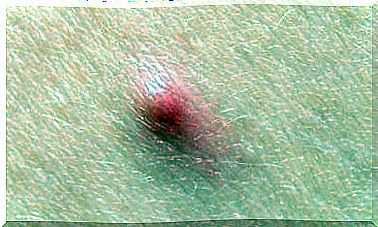Everything You Need To Know About Fetus In Fetu

The first case of fetus in fetu was reported in 1800. Since then, about 200 cases have been reported worldwide. The rarity of this anomaly and its geographical distribution have prevented in-depth studies of this phenomenon.
Meckel discovered this strange condition for the first time. He named it fetus in fetu to refer to those cases where a parasitic twin is found in his or her healthy sibling, serving as its host.
It is very common for doctors to initially diagnose this disease as a painless lump. 89% of cases are detected in the first 18 months of life. However, there are also many cases where she is late to diagnose.
Fetus in fetu is a rare or orphan disease

Only about 200 cases have been documented worldwide. This abnormality occurs in approximately 1 in 500,000 births. In most cases, doctors diagnose it during childhood. However, it has also been found in adults up to 47 years of age.
It is a variant of the parasitic twins
Fetus within fetu is a variant of the phenomenon known as parasitic twins. This is a condition where two twins are together and one of them has a much smaller body than the other.
In these cases, the host twin or autosite allows the parasite to survive, as it has no organs of its own. Fetus in fetu is also considered an extreme case of conjoined twins.
Fetus in fetu is an accident

Scientists do not know the exact cause of this phenomenon. They just know that it is an accident that happens at some point during the formation of the zygote. For some reason, the twins do not separate completely and remain attached to one part of their bodies.
All this happens before the embryo forms. One of the twins then develops normally, while the other shrivels. For this reason, the shriveled embryo remains in the healthy twin and is completely dependent on the other for survival.
A fetus in fetu has a strange appearance
It is normal for the host fetus to die before birth. If this doesn’t happen, the baby will have a bulge in the area where the parasitic twins are. In 80% of cases this happens in the abdominal area. However, it is also possible for the parasitic twin to settle in the scrotum, skull, etc.
Fetus in fetu is a humanoid. When doctors take it out, it ‘s wrapped in a membrane that makes it look like a chicken egg. However, it is extremely hard and quite large.
When removed from that shell, the parasitic twin is white. When doctors perform this procedure, it dies because it is completely dependent on the healthy twin.
Fetus in fetu and teratoma
A teratoma is an encapsulated tumor that contains remains of tissues and even organs. There are known cases of teratomas containing hairs, teeth, bones and even hearts, although this is quite rare.
Because of its properties, a teratoma is sometimes confused with fetus in fetu. Researchers have established criteria to distinguish one from the other. Teratomas can become malignant while fetus in fetu cannot. Similarly, to call it a fetus in fetu, it must have a backbone.
It poses a risk to the host
The parasitic twin is a potential risk to the healthy twin. It turns into a burden that you carry in your body and it serves no purpose and can weigh up to 1 kilogram. It has no brain and an empty cranial cavity, nor does it have a thoracic cavity, but instead has firm flesh.
The risk also depends on the location of the parasitic twins. As we mentioned, it is almost always located in the abdomen. However, there are cases when it is in the oral cavity (6), in the skull (7-9), in the liver (10) and other dangerous locations. Thirteen cases have been reported in which more than two parasitic twins coexisted.









